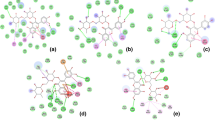Abstract
Diabetes is a deteriorating metabolic ailment which negatively affects different organs; however, its prime target is insulin secreting pancreatic β-cells. Although, different medications have been affirmed for diabetes management and numerous drugs are undergoing clinical trials, no significant breakthrough has yet been achieved. Available drugs either show some side effects or provide only short-term alleviation. The rationales behind the failure of current anti-diabetic treatment strategy are association of complex patho-physiologies and participation of various organs. Consequently, there is a critical need to search for multi-effect drugs that might impede various patho-physiological mechanisms related to diabetes. Fortunately, one natural compound could act on several diabetes linked targets. Thus, natural compounds might be regarded as a viable alternative choice to improve the progression as well as side effects of diabetes. Despite the fact that immense literatures are available on natural compounds indicating promising outcomes against diabetes, more systematic studies are still needed to establish them as effective anti-diabetic agents. Till date, we are unable to access all the information regarding modes of action, toxicity risks and physicochemical properties of anti-diabetic natural compounds on one platform. Hence, anti-diabetic natural compounds database (ADNCD) has been created to categorize each anti-diabetic natural compound on the basis of their mode of action and to provide compendious information of their physicochemical properties and toxicity risks. In short, ADNCD has imperative information for the researchers working in the field of diabetes drug development.

(ADNCD screen capture http://www.adncd.com/index.php)


(ADNCD screen capture http://www.adncd.com/browse.php)

(ADNCD screen capture http://www.adncd.com/compoundinfo.php?4)
Similar content being viewed by others
References
Alqahtani N, Khan WA, Alhumaidi MH, Ahmed YA (2013) Use of glycated hemoglobin in the diagnosis of diabetes mellitus and pre-diabetes and role of fasting plasma glucose, oral glucose tolerance test. Int J Prev Med 4:1025–1029
Chang CL, Lin Y, Bartolome AP, Chen YC, Chiu SC, Yang WC (2013) Herbal therapies for type 2 diabetes mellitus: chemistry, biology, and potential application of selected plants and compounds. Evid Based Complement Alternat Med 2013:378657
Choudhury H, Pandey M, Hua CK, Mun CS, Jing JK, Kong L, Ern LY, Ashraf NA, Kit SW, Yee TS, Pichika MR, Gorain B, Kesharwani P (2017) An update on natural compounds in the remedy of diabetes mellitus: a systematic review. J Tradit Complement Med 8:361–376
d’Emden MC, Shaw JE, Jones GR, Cheung NW (2015) Guidance concerning the use of glycated haemoglobin (HbA1c) for the diagnosis of diabetes mellitus. Med J Aust 203:89–90
Diabetes Canada Clinical Practice Guidelines Expert Committee, Punthakee Z, Goldenberg R, Katz P (2018) Definition, classification and diagnosis of diabetes, prediabetes and metabolic syndrome. Can J Diab 42:S10–S15
Governa P, Baini G, Borgonetti V, Cettolin G, Giachetti D, Magnano AR, Miraldi E, Biagi M (2018) Phytotherapy in the management of diabetes: a review. Molecules 23:E105
Hameed I, Masoodi SR, Mir SA, Nabi M, Ghazanfar K, Ganai BA (2015) Type 2 diabetes mellitus: from a metabolic disorder to an inflammatory condition. World J Diab 6:598–612
International Diabetes Federation (2015) http://www.diabetesatlas.org/key-messages.html. Accessed 21 Jan 2017
Maitra A, Abbas AK (2005) Endocrine system. In: Kumar V, Fausto N, Abbas AK (eds) Robbins and cotran pathologic basis of disease, 7th edn. Saunders, Philadelphia, pp 1156–1226
Malviya N, Jain S, Malviya S (2010) Antidiabetic potential of medicinal plants. Acta Pol Pharm 67:113–118
Olokoba AB, Obateru OA, Olokoba LB (2012) Type 2 diabetes mellitus: a review of current trends. Oman Med J 27:269–273
Ota A, Ulrih NP (2017) An overview of herbal products and secondary metabolites used for management of type two diabetes. Front Pharmacol 8:436
Zeidan M, Rayan M, Zeidan N, Falah M, Rayan A (2017) Indexing natural products for their potential anti-diabetic activity: filtering and mapping discriminative physicochemical properties. Molecules 22:E1563
Acknowledgements
Aisha Khatoon is supported by Maulana Azad National Fellowship grant from UGC, New Delhi, India (Grant number: MANF-2014-15-MUS-UTT-36526). Sibhghatulla Shaikh is supported by INSPIRE grant from the Department of Science & Technology (DST), New Delhi, India (Grant number: IF130056), which is sincerely acknowledged. We would like to thank the developers of Mol inspiration property calculation tool and Osiris property explorer.
Author information
Authors and Affiliations
Corresponding author
Ethics declarations
Conflict of interest
On behalf of all authors, the corresponding author states that there is no conflict of interest.
Rights and permissions
About this article
Cite this article
Khatoon, A., Rashid, I., Shaikh, S. et al. ADNCD: a compendious database on anti-diabetic natural compounds focusing on mechanism of action. 3 Biotech 8, 361 (2018). https://doi.org/10.1007/s13205-018-1385-x
Received:
Accepted:
Published:
DOI: https://doi.org/10.1007/s13205-018-1385-x




